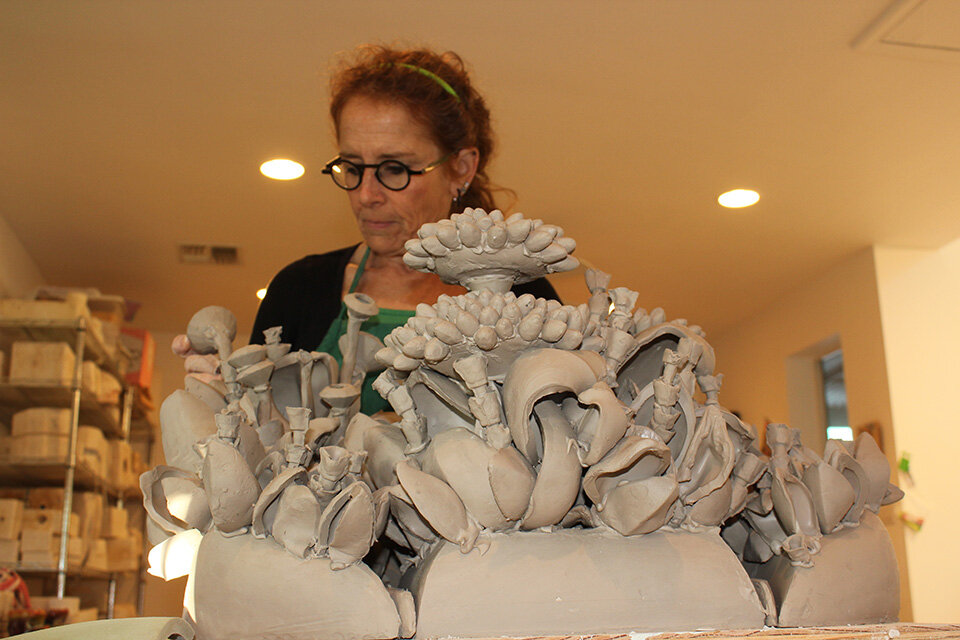
BIO
Susan Beiner is a ceramic artist and professor in the Herberger Institute for Design and the Arts at Arizona State University. Her sculptural installations expose concern about the effects on the fragile ecosystem of humans, animals, and plants. Her objective is to create an ecological balance between the conflict that has arisen between nature and culture.
Beiner has exhibited nationally and internationally, has received numerous awards and residencies and her work is included in diverse and prestigious collections such as The Yixing Ceramics Museum, China, Los Angeles County Museum of Art, CA, Gyeonggi Museum of Contemporary Ceramic Art, Korea, Princessehof Keramiek Museum, Netherlands, New Taipei City Yingge Ceramics Museum, Taiwan, and the Long Beach Museum of Art, CA to name a few.
She was named Joan R. Lincoln Endowed Professor in Ceramics in 2017. This professorship was created by the Lincoln family in honor of Joan Lincoln’s lifelong passion for making, collecting, and supporting ceramic arts.
Education
M.F.A. Ceramics, University of Michigan, School of Art, Ann Arbor
B.F.A. Rutgers University, Mason Gross School of the Arts, New Brunswick, NJ
Artist Statement
The opulent style of my work initially stemmed from my interest in 18th century European porcelains. I began translating the painted surface of these vessels into layers of encrusted form and color.
Various industrial objects and new discoveries in my environment inspire me, as I question how our creations and technology mold our perceptions. I am influenced by the surrounding colors and textures and how combinations fall into the patterns that occur in nature. I admire shapes of hardware but while negating their intended function, I utilize them as organic specimens rather than industrial fasteners. I search to find a relationship between these disparate parts, as the gap between man-made and natural becomes ever decreasing.
My most recent work displays a shift to a more sculptural attitude, concerned with making what is organic into synthetic (fitting into the contemporary world and more suited to today’s manufacturing and industrial design). Covering an expanse of space, my use of excess makes reference to urban sprawl as the space around us becomes increasingly smaller. My interest is fueled by elements of layering, fragmentation, multiplication, juxtaposition and complication collecting in a room size venue.
This has lead me to use materials that go through an industrial process such as plastics, rubber and foam. The inherent qualities of these materials further the connection that occurs between the layers of internal and external space. Here as a viewer, we are challenged by our own perceptions of what is authentic and what is not.
